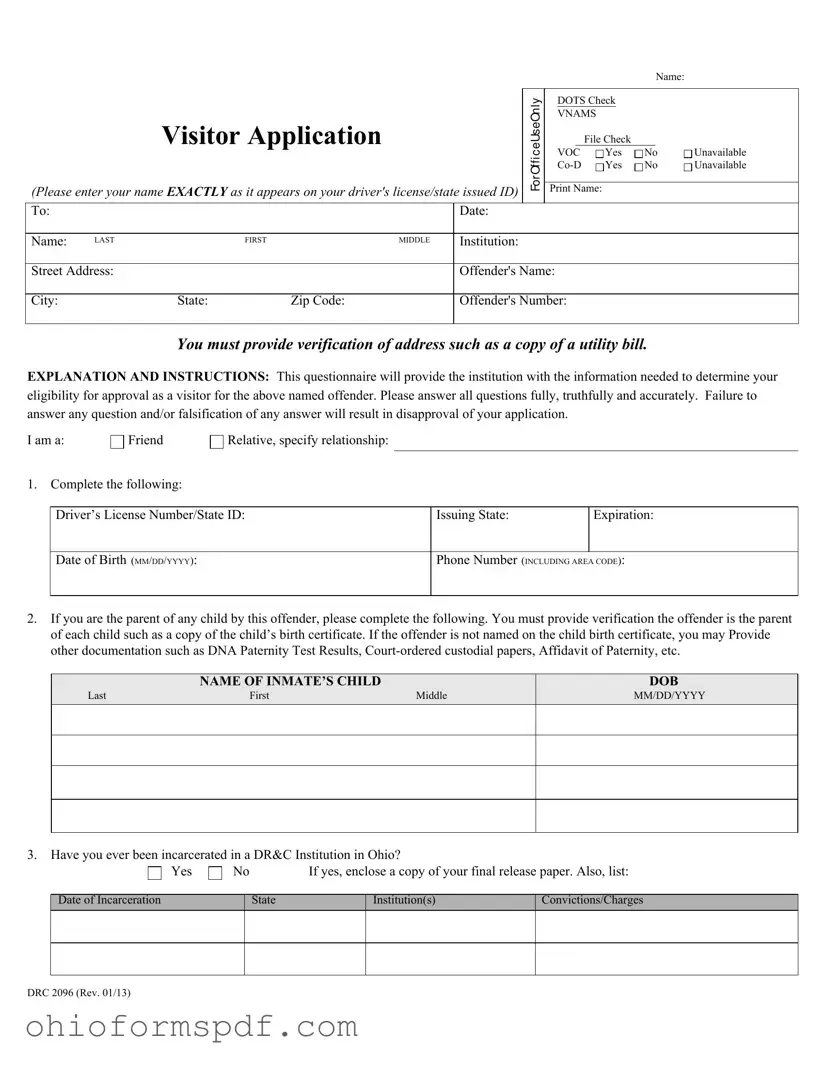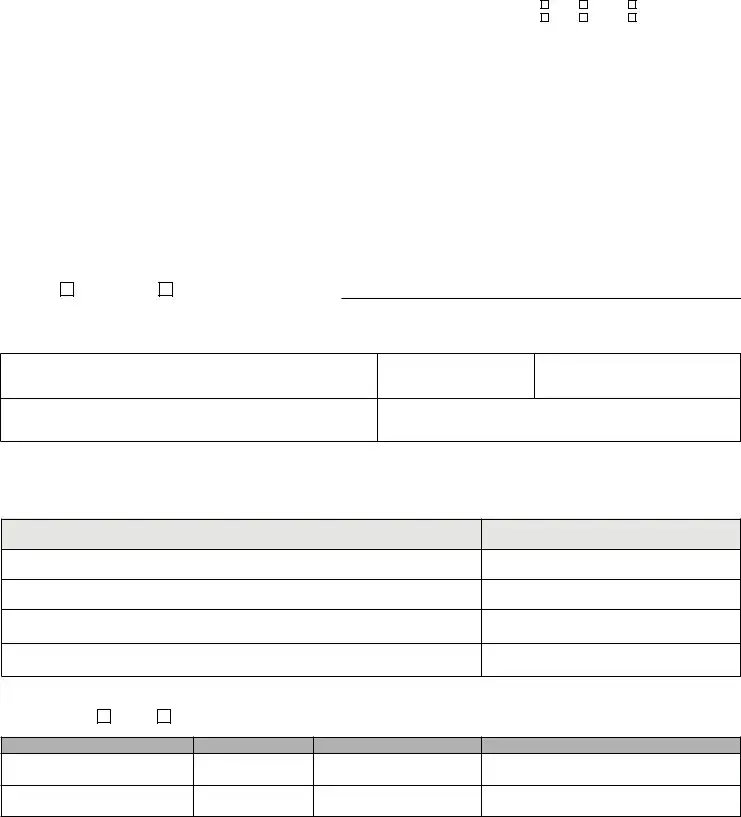What is the Ohio DRC 2096 form?
The Ohio Department of Rehabilitation and Correction (DRC) 2096 form is a visitor application used by individuals who wish to be approved for visiting inmates in Ohio correctional institutions. This form gathers necessary information to assess eligibility for visitation.
How do I fill out the DRC 2096 form correctly?
To correctly fill out the form, you must provide your full name as it appears on your driver's license or state-issued ID, your relationship to the inmate, contact information, and answer all questions truthfully. You also need to supply verification of your address, such as a utility bill, and potentially additional documents if answering "yes" to certain questions on the form.
Do I need to provide identification when submitting this form?
Yes, you must enter your name exactly as it appears on your driver's license or state-issued ID. This will be used for verification purposes during your first visit if your application is tentatively approved.
What documents are required if I'm a parent of the inmate's child?
If you're the parent of the inmate's child, you must provide verification, such as a copy of the child's birth certificate. If the inmate is not named on the birth certificate, additional documents like DNA paternity test results or court-ordered custodial papers may be submitted.
What happens if I have been previously incarcerated?
If you have been previously incarcerated in a DR&C institution in Ohio, you need to enclose a copy of your final release paper with the DRC 2096 form. Additionally, provide details of your incarceration, including dates, state institutions, and convictions or charges.
What should I do if I have an ongoing criminal action or have been on probation or parole?
If you are currently a party to any criminal action or have been on probation or parole, attach a letter to the form detailing indictments, convictions, sentencing information, details of the offense, state and county involved, and the contact information of your probation or parole officer. Include a copy of your final release papers and a letter from your probation or parole officer granting permission to visit.
Are there specific dress code requirements for visiting an Ohio correctional institution?
Yes, there are specific dress code requirements, including restrictions on see-through clothing, sleeveless tops, low-cut clothing, excessively short skirts or shorts, and clothing with inappropriate holes or gang-related markings. Additionally, form-fitted clothing made from materials like spandex is not allowed. Visitors are advised to check the complete list of dress code rules and regulations before visiting.
What are the restrictions on items I can bring during a visit?
Visitors are generally not allowed to bring purses, handbags, backpacks, or similar items into the facility. Diaper bags and infant carriers are allowed but subject to search. Clear plastic bags are preferred for carrying necessary items. Items that frequently prevent clearance through metal detectors include hairpins, bras with metal underwires, certain types of footwear, clothes with multiple zippers, and excessive jewelry.
What should I do if my application for visitation is approved?
If your application is approved, your initial status will be "tentatively approved" pending identity verification at the time of your first visit. Once verified, your status will change to "approved." It is the inmate's responsibility to inform you of your approval status. After approval, adhere to the visitation rules and dress code for a smooth visiting experience.




 Yes
Yes
 No
No
